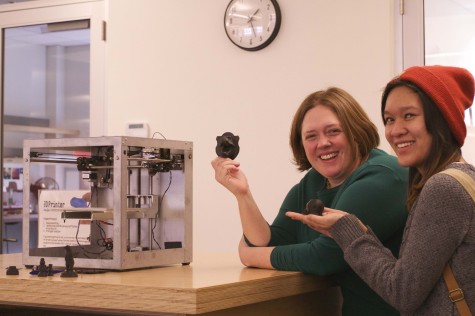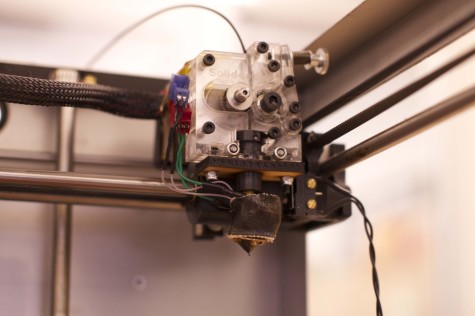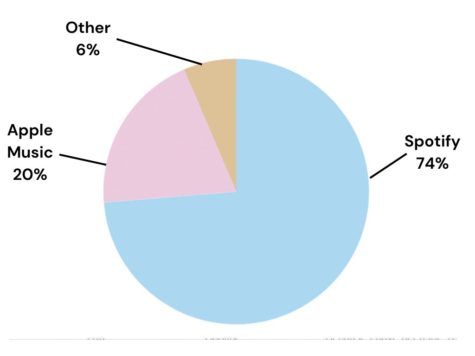Science Spotlight: The 3D Printer

Lizz Buchanan and Ja’de Till ’17 pose with some 3D creations
“It really is simple to use, and it’s open to anyone,” says Lizz Buchanan, Upper School Librarian, describing the simple, yet enigmatic 3D printer.
While it seems intimidating, the 3D printer only has a few short steps. “All you have to do is come to us with a design you made, and we can help you print it,” Buchanan explains.
How to make the design? “Google SketchUp and design.org enable you to design what you want. There are many sites and programs out there, all we require is that you make it yourself,” Buchanan says. The transition between design file and printing is easy; a simple upload of the file to the printer is all that is needed to print.
3D printers are actually quite complex in how they print the designs. After downloading the design, the printer and a program on your computer creates a map of how the object will be printed in layers.
To print the object, a string of plastic is heated up to 200 degrees Celsius, and then a mechanical device operating on an x-y-z axis (with z being the platform the object is made on) prints the plastic layer by layer. The final product is ready once the plastic cools.
While 3D printers are usually used for art projects and decorations (Blake’s printer has mostly created miniature animals and sculptures) , 3D printers are having practical uses today. A professor at USC recently claimed that a large 3D printer could build a house in 20 hours.
3D printing has become more commonplace in the modern world, and with printing materials cheaper than that used by regular printers, 3D printers are set to play a large part in the future. “I think that this technology will become a big part of [our] lives,” Buchanan forecasts.


My name is Stuart and I like pottery, woodworking and cheese. This is my third year on Spectrum, and I am the Comedy editor.









